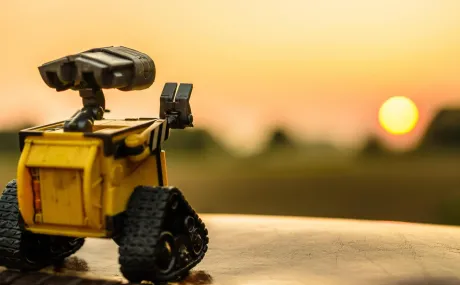Live Auctions: 6 Tips to Make Your Event Successful
This guest post was written by Josh Meyer, Director of Marketing for OneCause (formerly BidPal), a Salesforce app partner that offers fundraising solutions, software, and services to help for nonprofits save time and raise more money. Josh has a passion for helping to create positive change and loves that his current role allows him to help nonprofits engage new donors and achieve their fundraising goals.
A live auction should be as fun and exciting for your supporters as it is profitable for your nonprofit.
Of course, you can’t measure the success of your live auction just from the fun that was had. Instead, you need to see that your supporters’ passion was channeled into greater support for your cause.
What you’re looking for is revenue; the way you get it is from high turnout, lots of bids, and strong relationships with your attendees.
In this blog post, we’ll show you how to find success by focusing on these key tasks before, during, and after your event:
-
Streamline registration
-
Secure sponsors
-
Prioritize auction items
-
Implement mobile bidding software
-
Send thank yous and surveys
-
Dive into reporting and analytics
Bonus: Your live charity auction will go off without a hitch with the right software at your back. Start your search with this beginner’s guide on charity auction software on Idealist Consulting’s blog.
With your software guide handy, let’s jump into the strategies for a successful live auction!

1. Streamline registration
It seems simple: the easier it is to register for your live auction, the more completed registrations you’ll receive.
So, what can you do to make the registration process easier?
First, you have to ensure that anyone who wants to register has access to your registration form. The best way to ensure easy access is to implement online event registration through your event fundraising software.
Online registration goes beyond a simple registration form hosted on your website. You should be taking advantage of other benefits of online event registration software:
- Microsites: Host all the important information about your event, as well as your registration form, on one centralized, branded website.
- Ticket packages: Encourage attendees to purchase higher-priced tickets by offering benefits like prime seating or free meal tickets.
- Discount codes: Offer special discount codes to different segments of your donor database and to early registrants.
- Seating charts: Allow attendees to choose their seats before they arrive from an up-to-date seating availability chart.
- Onsite sign-in: Integrate your registration software with mobile stations, like iPad check-ins, to get your guests in and bidding quickly.
All of these online features will work together to support your overall auction engagement strategies. Your attendance will rise, making it easier than ever to secure sponsors for your future events! support your event attendance strategy.

2. Secure sponsors
The less money you have to spend on an event, the greater percentage of your revenue can go toward your cause. To keep ticket prices at a reasonable level, look for sponsorships.
While you could ask a major donor to sponsor your event, most nonprofits reach out to companies to sponsor their events.
You could ask companies to sponsor your event by:
- Donating outright toward your event budget
- Matching pledges at a certain benchmark
- Making in-kind donations of venue, food, or staff
- Contributing unique auction items
Cold calling companies to ask for donations can work, but you will save yourself time and energy by taking a smarter route. Look for companies that you’re already connected to, either because a loyal donor works there or because the company has given to your nonprofit or others like yours in the past.
If you have a dedicated donor who works at a philanthropically involved company, ask them to reach out to their employer on your behalf. They have connections within the company that a stranger wouldn’t have, so their request has a better chance of reaching the right person through the proper avenues.
The best person to reach out to companies you haven’t had much or any contact with before is a member of your board or an executive within your staff. Hearing from someone with authority will encourage the company to take your request seriously.
However, you decide to reach out, be sure to check out Fundraising Letters’ free sponsorship templates before crafting your own sponsorship letter.

3. Prioritize live auction items
The last thing you want is for all of your supporters to show up to your live auction and not bid on any of your auction items.
Don’t let all that planning and setup cost go to waste! With careful attention to auction item procurement, you can ensure some healthy competition when the bidding begins.
When selecting auction items, look for:
- Uniqueness. If your auction is the only place this item can be found, its value instantly increases. You don’t have to search for a rare artifact. Think about prizes only you can offer, such as a VIP invitation to your next event.
- Low cost (to you). Offer items that are valuable to your donors but don’t cost you much, such as a guided tour around your facilities or a guest pass for your next event. Or, ask a sponsor to foot the bill of a high-value item.
- Packaging opportunities. To make some of your lower cost items more appealing to your auction attendees, package them together to increase the overall value. For example, a gift card to a restaurant and two movie tickets are desirable on their own — but together as a date night package, their perceived value will jump!
For more tips, head on over to OneCause’s ultimate guide to charity auctions!
Of course, you can’t just offer your amazing auction items and expect the excitement to spread on its own. Instead, incorporate your auction items into your marketing efforts.
Drum up anticipation by revealing some of your items before the big day arrives. Share photos on social media and by email. Keep that anticipation building by saving the really valuable items for the end of the auction.
The more excited your attendees are about your items before they even arrive, the greater the chance they’ll increase their bids during the live auction itself.

4. Implement mobile bidding software
Paper bid sheets and bidding paddles are simple and effective. If you’re expecting a high turnout for a popular cause, like education or health, you’ll likely need a more scalable solution.
For large crowds, mobile bidding software is the way to go!
Take advantage of mobile bidding features such as:
- Full auction item catalogs hosted within the mobile bidding app
- Automated bidding with custom maximum bid limits
- Automatic push notifications when attendees are outbid or win
- Text message scheduling throughout the event
- Full receipt history from auctions, raffles, and donations
You’ll want to ensure that any mobile bidding software also includes a live scoreboard. With this feature, attendees can keep track of the status of their bids, which fosters healthy competition and increases bids.
Any time you implement new software, you’re going to need some time to work through the learning curve. Make sure you take the time to train any staff or volunteers who will be using your software before you roll it out.

5. Send thank yous and surveys
While it’s during the event that your bidders’ excitement is at its peak, don’t forget to keep the conversation going even after the last item is auctioned off.
After all, the goal of a live auction isn’t just short-term revenue — it’s also to strengthen the relationship between your organization and your event attendees.
As soon as possible after your event, send out thank you letters to your attendees. Email is the quickest and cheapest way to send thank you letters, but nothing beats the formality of a physical letter or postcard in your supporters’ mailbox.
If you decide to send physical letters, make sure you’re choosing from direct mail companies that integrate with software you’re already using so you don’t have to manually address your envelopes.
Thank yous aren’t the only messages you should send out after a live auction event. You should also send surveys to your attendees, volunteers, and staff to ask how your next event could be better. Consider questions like:
- Was the bidding process easy to understand?
- Were our staff friendly and helpful?
- Was the parking situation at the venue satisfactory?
- Were all dietary restrictions in your party met?
Suggestions aren’t the only valuable feedback from a survey. You should also ask about your attendees’ favorite parts of the evening. These comments will come in handy when you’re marketing your next auction.
And on a deeper level, soliciting feedback through surveys shows your supporters that you care about their opinions and want your auctions to continually improve.

6. Dive into reporting and analytics
You have methods other than surveys for analyzing how successful your event was.
If your registration and auction software solutions are integrated with a top-notch reporting system, you’ll have the most important data at your fingertips, including:
- Registered attendees vs. actual attendance
- Average bid size
- Overall revenue
- Top auction items, packages, and bidders
Just like in other areas of your nonprofit operations, the more information you have at your disposal, the better.
This information can tell you if you met the goals you set for your live auction — but just as importantly, the right data will show you how you can provide an even better experience next time.
For example, examining which auction items earned the highest bids can direct you to the best auction items for your next event. You can also identify the top bidders of the night as potential major donors for your next campaign.
A live auction is an incredibly engaging event, but it’s not just about having fun for one night. Planned and executed well, your live auction can set your nonprofit up for success for the long term!
Ready to integrate apps, like OneCause, into your Salesforce instance? Check out our How to Budget for a Salesforce Project whitepaper to help you plan and create a budget for your new event management and live auction apps.
















